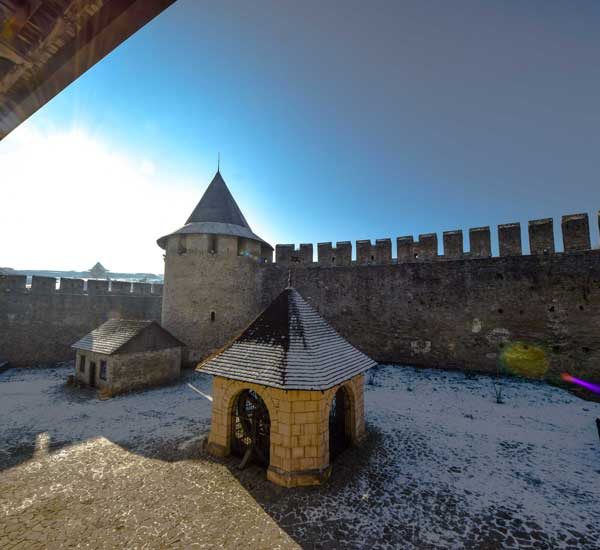Castles in Ukraine provide something interesting for tourists to the country as well as locals. Here is a list of notable ones you should stop by. A list of splendid Castles You Must Visit in Ukraine are below. Ukraine is home to many speechless castles and fortresses. By the way, some Castles in Ukraine are well famous, and some of them are forgotten. Good news. I visited western Ukraine last year, and the European Union is founding to develop Ukraine Historical sites. And It makes it better for local tourism in the country. Moreover, I have given more information about the essential Castles in Ukraine. Also, I have given the name of some of the others below.
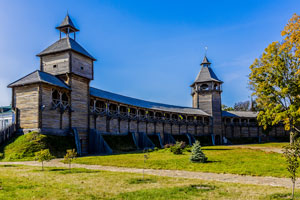
Bilhorod – Dinistrovskyi
Kamianets-Podilskyi Castle
Khotyn Fortress
Citadel of Baturin Fortress
Pidhirtsi Castle
Lubart’s Castle
Svirzh Castle
Medzhybizh Fortress
Palanok Castle
Radomysl Castle
Dubno Castle
Shenborn Palace
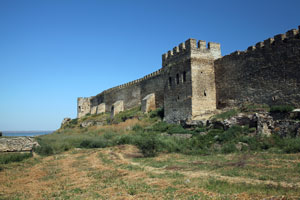
Castles in Ukraine – Bilhorod Dinistrovskyi
Also known as Akkerman Fortress, the Bilhorod Dinistrovskyi is located on the Dniester estuary bank on the ruins of Tyre, the ancient Greek city. It was constructed during the thirteenth century and currently sits in the town of Bilhorod – Dnistrovskyi (pop. 50,296) around 18 km from the Black Sea. The city of Bilhorod – Dnistrovskyi sits in the same category as Rome and Athens as one of the World’s ten oldest cities. The Castle is viewed by many as the primary attraction in Ukraine’s oldest town (the city recently celebrated its 2,500th anniversary). The Castle is the most massive fortress in Ukraine. Despite its age. The Castle remains in excellent condition, preserved in time for the rest of the World to see and experience. It is the best-preserved medieval fortress in the country.
More Information About Bilhorod Dinistrovskyi
The Castle was initially founded on the ruins of the ancient city of Tyre. Their excavations are ongoing near the entrance to the fortress. It was initially constructed to defend the town from the constant waves of invasions from nearby enemies. The fortress served this purpose well, aided by its over 2 km worth of walls, until the fifteenth century when the Ottomans finally overtook it after a lengthy battle. They renamed it Akkerman (the White Fortress). They maintained control of the fortress for over three hundred years until the Russian Empire claimed it in the 19th century after victory in the Russo – Turkish War. Eventually, the fortress became less and less important as a defensive outpost. Now, it has been controlled by the Ukrainian state for over a century.
How To Get There?
Bilhorod – Dnistrovskyi can be easily reached from Odessa. Bus number 560 runs every 10 minutes from Odessa’s transit center to the Bilhorod – Dnistrovskyi railway station. It is a 55 km drive that takes around one and a half hours. From there, you will walk down Vokzalnaya Street to the park, turn right on Dzerzhinsky Street, and from there, the fortress will be visible. You can also reach the town by train and from Odessa, leaving every 2-3 hours or taxi.
Kamianets Podilskyi Castle

The Kamianets Podilskyi Castle is a former Ruthenian – Lithuanian castle and three-part Polish fortress located in historic Kamianets – Podilskyl, Ukraine. The town is in the historic region of Podolia, which lies in the western part of Ukraine.
First Built
The Castle is the most recognizable part of the city and has served as a significant regional and national tourist attraction. The history of the Castle is long, complicated, and genuinely fascinating. Initially, it was believed the castled was built at some point during the fourteenth century. However, archaeological excavations have now presented evidence that the Castle could have been around since the twelfth or thirteenth centuries. It has been subsequently “remodeled whenever it was initially built,” several times since then. At the turn of the fifteenth century, Krakow’s voivode, Spytek of Melsztyn, began the project of updating the Castle, which had grown outdated but was still vital to the local defense. During this upgrade, the old towers were renovated, and ten new buildings were installed.
Second Restoration
Only around a hundred and fifty years later, the Castle was renovated yet again by Hiob Brutus, a military engineer, and architect. It was Brutus who was responsible for adding the western tower and an additional eastern tower. He also added the east wall as well as the underground gallery. These many renovations were necessary because the Castle often found itself the victim of invaders. The Castle was perfectly situated in a strategic transport crossroads in Podolia, making it a very desirable location for everyone in the area.
Russian Empire in 1793
From 1434 until the Russian Empire annexed it in 1793. The Castle played a significant role in the defense against the Cossack, Ottoman, and Tatar invasions. As in history, The Castle was attacked by Tatar hordes 51 times between the fifteenth and seventeenth centuries. The Castle also played an essential role in the Khmelnytsky uprising between 1658-1654. The fortress then changed hands several times before falling under the Ottoman rule in August of 1672.
Ottoman
The Ottomans remained in control of the Castle for twenty-seven years, until the 1699 Karlov Peace Treaty saw the fortress return to the Polish. Since then, the Castle had seen its status as a military fortification stripped on two separate occasions. During these times, it was used as a military prison.
It also came under Russian rule, housed Russian officers during the French invasion of Russia, became the center of the ante-feudalism movement in Podolia, housed 67 different political organizations, and 1928, a historical-cultural preserve as decreed by the government.
New Developments for Tourism
Since that time, the Castle has been a hugely popular tourist destination in Ukraine. Then, In the 1930s, the Castle was getting upwards of 300,000 visitors per year. In 1947, it was listed on the All-Union list of historical places. In 1989, it was put on the tentative list of UNESCO World Heritage Sites, and it is one of the Seven Wonders of Ukraine. The Castle is literally dripping with the history that shows itself all over the grounds. Whether you love history, legends, medieval architecture, or just an ancient castle, Kamianets-Podilskyi Castle is a must-see. It is truly a mesmerizing place that can keep you fascinated all day long.

Castles in Ukraine Khotyn Fortress
Also, one of the Seven Wonders of Ukraine, the Khotyn Fortress, is a fortification located on the Dniester Riverbank in Khotyn, Chernivtsi Oblast province in western Ukraine. It sits in the northern portion of the historical Bessarabia north region, which was split between Ukraine and Moldova in 1940. The Khotyn Fortress is near Kamianets-Podilkyi Castle. The Khotyn Fortress’ origins go back to the 10th century when a fort was built on the same site as the Castle. Due to the fort’s location on important transportation routes, it was later rebuilt into a fortress. The land was ideal due to the fact it connected Scandinavia and Kyiv with the Ponyzia (lowlands), Podilia, Genoese, and the Greek colonies on the Black Sea.
Prince Danylo of Halych
The fortress was rebuilt in 1250-1264 when Prince Danylo of Halych. And his son Lev, added a half meter to the walls, built a 6-meter wide moat around the grounds, and added new military buildings in the northern part of the fortress. Throughout the fourteenth, fifteenth, and sixteenth centuries. The fortress traded hands several times, first being taken by the Genoese. Then, the Principality of Moldavia, who held it for quite a while before losing it to the Ottoman Empire. Also, who lost it Polish-Lithuanian Commonwealth, who had it taken from them by the Zaporozhian Cossacks. The trading of hands of Khotyn continued, all the way through World War II.
World War II
On July 6, 1941, the German-Romanian Military took the fortress who maintained control of the Castle until April 3, 1944. Then, the Castle was freed from the Axis. Now, Khotyn stands as one of the biggest cities in the Chernivtsi oblast. It is also an industrial, cultural, and tourist center in this region. The fortress is the centerpiece of the town. In 2000, the Cabinet of Ministers of Ukraine created the Khotyn fortress architectural preserve, which intends to preserve the fortress. In September 2002, the city celebrated its 1,000th anniversary. The Khotyn Fortress is yet another fascinating site filled with an incredible history that can captivate any tourist.
Exact Location
The fortress is located at 40A St. Pokrovska St. It is open from 9:00 am to 6:00 pm, and entrance costs 4 hrs for adults and 2 hrs for children. If you would like to take pictures, there is an additional 1 hrs fee. Khotyn can be reached from Chernivtsi (50 km) or Kamianets-Podilskyi (22 km) by bus. There are daily trains to Chernivtsi from Kiev.
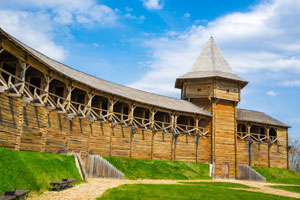
Castles Ukraine Citadel of Baturin Fortress
While the structure that currently stands at the site of the Citadel of Baturin Fortress is not the original structure, it is still fascinating nonetheless. There were eight towers and a large, wraparound wall that protected the fortress from attackers in its glory days. The only area that was not covered by walls was the area bordering the Seym River, which was naturally protected by steep slopes and other natural barriers. Inside all the walls was a small open area with a church.
Tsar Peter the Great
The fortress continued to grow, peaking during the reign of Hetman Ivan Mazepa. At this time, the fortress was one of the largest in Ukraine and occupied almost twenty hectares. However, the man responsible for the fortress’ prosperity was also the man responsible for its demise. In 1708, Mazepa decided to betray Russian Tsar Peter the Great and ally with Charles XII of Sweden.
Alexander Menshikov
Upon hearing this news, Peter the Great ordered his army to destroy the fortress. And so, a Russian Army lead by Alexander Menshikov took the fortress, killing everyone and looted and burned Baturin (which was made of wood) to the ground. In 2008, a group called Ukr Restoration reproduced a number of the structures on the original land. Thus far, the group has rebuilt the entrance tower, the north fortress tower, the south fortress tower, the defensive wall, the Hetman House, the wooden Resurrection Church, the Treasury, the moat, and the Fortress Bridge. All of the structures have been rebuilt to their original specifications. The Citadel of Baturin Fortress is an excellent opportunity to visit a site where history is being reconstructed. It might not be the same structures that people lived hundreds of years ago. However, it is still fascinating and filled with Ukrainian and Eastern European history.
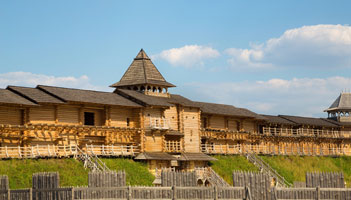
Castles Ukraine – The Wooden Churches
The wooden church architecture, which is widespread in Ukraine, dates back to the beginning of Christianity itself in the area. There are over 1,900 wooden churches in Ukraine. There are several different styles and forms specific to many regions and sub-regions of the country. Masonry churches remained common in the urban areas; however, in the smaller towns and rural Ukraine.
Wooden Church Architecture
Wooden church architecture dominated. In Central Ukraine, the majority of masonry churches’ multi-chamber design was still standard; only the construction was out of wood. Outside of this trait, the wooden churches of Central and Eastern Ukraine do not have the same regional variation as the wooden churches in Western Ukraine. In Western Ukraine, many of the regions maintained specific architecture styles that corresponded to their cultural, environmental, and historical differences. The one trait common to all the areas is the two techniques of roofing. The first, opasannia, involves projecting logs on the top of the corners of log walls and pidashshia, where similar supports are used, but the roof is extended far enough to form a continuous overhang of the ceiling around the church perimeter.
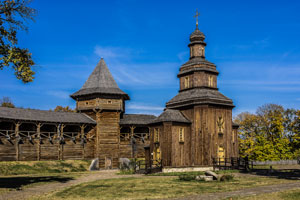
There Were Five General Styles of the Wooden Churches that were Popular in Ukraine.
Castles in Ukraine – Bukovina
1) The Bukovinan church had a tall gabled roof that terminates as a played roof over a polygonal sanctuary. It was usually built with logs that were covered with mud and whitewashed.
Wooden Castles Ukraine Lemko
2) The Castle was a three-sectioned church with tall gabled roofs and a tower over each section. The outlook over the entrance section was traditionally the tallest. Each tower was topped with a spire.
Castles in Ukraine – Hutsul
3) These churches were five-section cruciform churches using spruce logs to form the walls. The central dome was created with an octahedral shape with a splayed roof. Unique to Hutsul churches is the use of metalwork in the upper portions of the church.
Boyko
4) Boyko churches are also in three sections, the largest of which is the nave. Their distinguishing characteristics are the presence of intricate details, being multi-tiered, and having shingled roof work.
Castles Ukraine – Ternopil
5) These are considered a mix of Carpathian style and Kiev style. The nave was long and rectangular, and with gabled roofing on opposite ends with a small onion dome.
More Important Castles in Ukraine
Pidhirtsi Castle – located in the village of Pidhirtsi in Lviv Oblast western Ukraine
Lubart’s Castle is situated at Kafedralna St, 1A, Lutsk, Volyn Oblast
Svirzh Castle in Lviv Oblast, Western Ukraine
Medzhybizh Fortress – It is situated at the of the Southern part of Buzhenka rivers, closed by the town of Medzhybizh, Ukraine
Palanok Castle is the city of Mukacheve in the western Ukrainian oblast of Zakarpattia
Radomysl Castle is in the town of Radomyshl.
Dubno Castle is in Zamkova St, 7, Dubno, Rivne Oblast, Ukraine
Shenborn Palace in the Carpathian Mountains is located at Karpaty, Zakarpattia Oblast, Ukraine.
If you are in Ukraine, you are sure to see a wooden church. They are a significant part of the architectural landscape, and some of them exhibit incredible woodworking craftsmanship. When you come across one, take the time to take a look.
 TravellerHints!
TravellerHints! 
